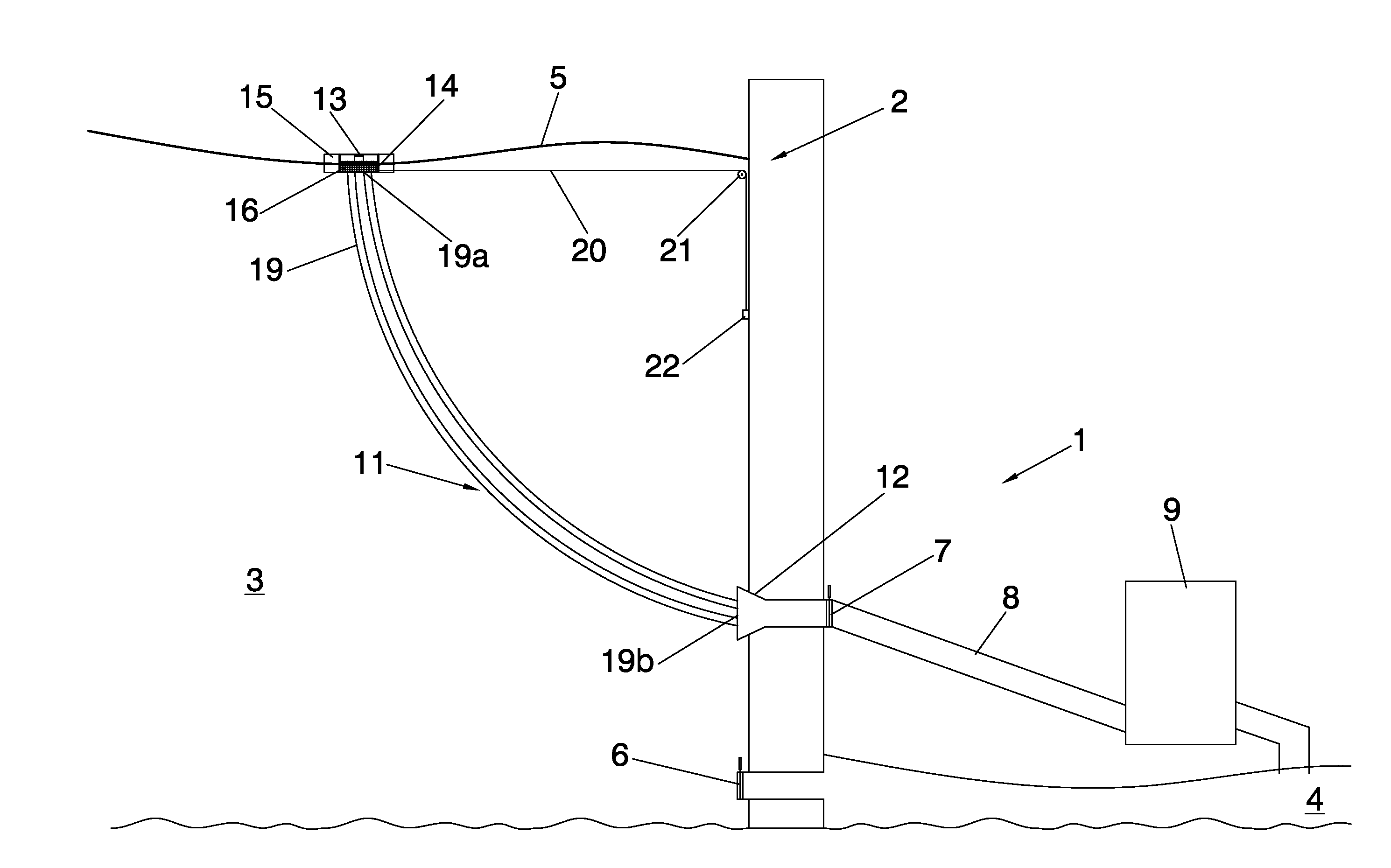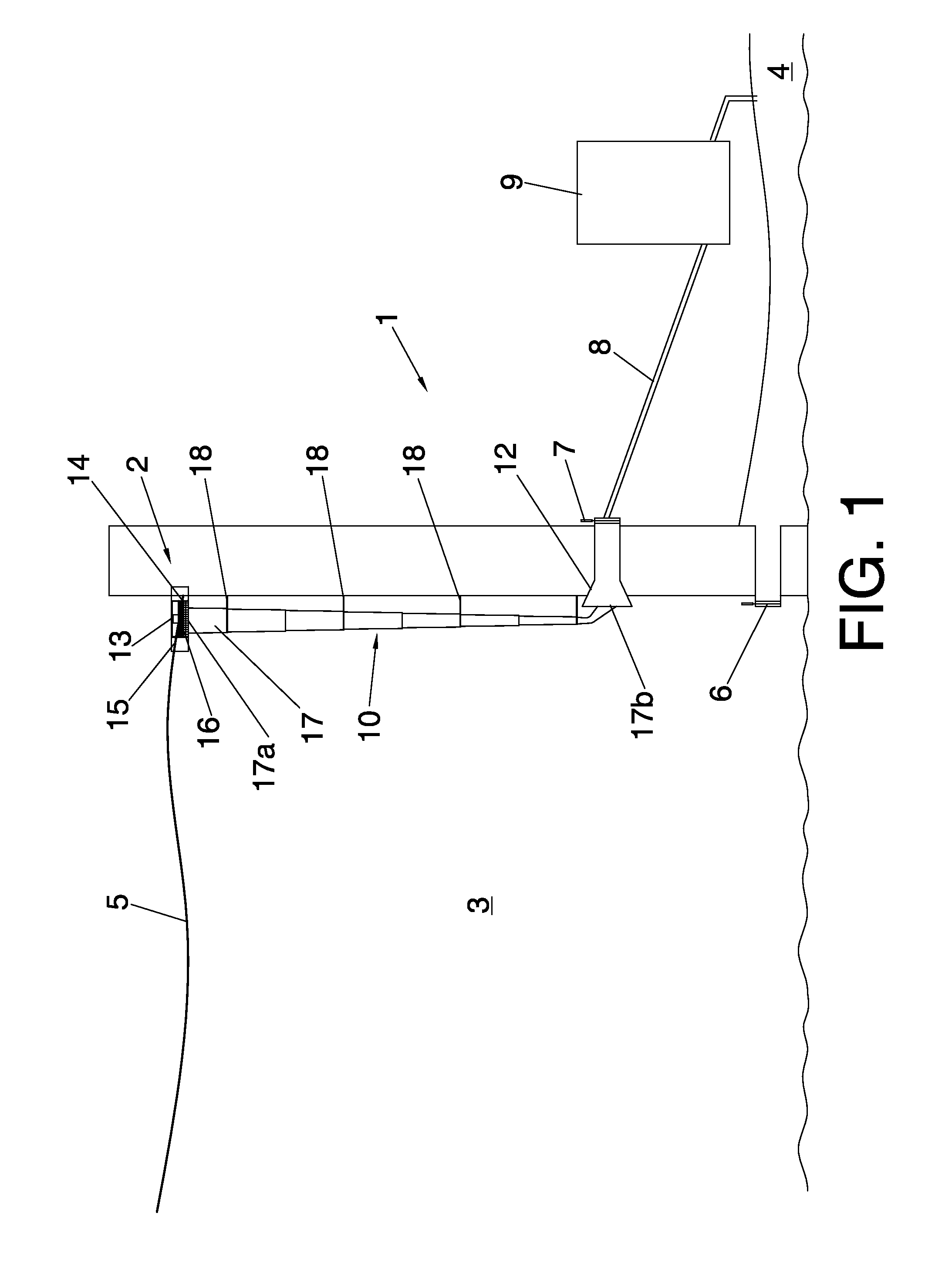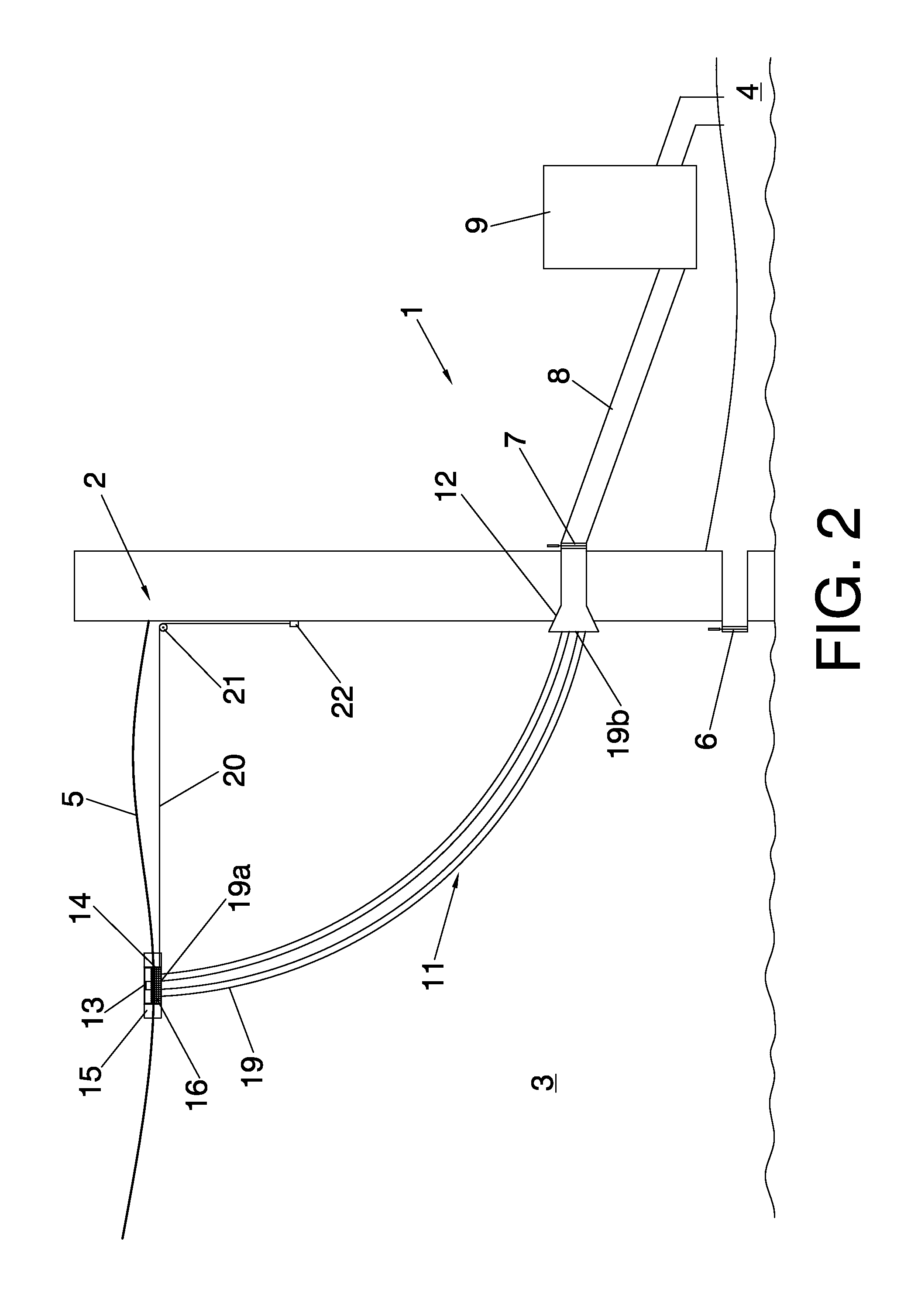System and method for reducing the downstream environmental impact of water extracted from a hydraulic dam
a technology of hydraulic dam and downstream environmental impact, which is applied in the field of system and method for reducing the downstream environmental impact of water extracted from hydraulic dam, can solve problems such as water oxygenation, and achieve the effect of reducing the downstream environmental impact of water extracted
- Summary
- Abstract
- Description
- Claims
- Application Information
AI Technical Summary
Benefits of technology
Problems solved by technology
Method used
Image
Examples
Embodiment Construction
[0088]FIG. 1 shows an embodiment of the telescopic tube water intake system—10—applied to a conventional hydraulic dam—1—which comprises a retaining wall—2—retaining dammed water in the upstream area—3—of the dam—1—, and a hydraulic power station—9—located in the downstream area—4—of the dam—1—. The retaining wall—2—has a drainage gate—6—located in the deepest area of the upstream area—3—, a feed gate—7—located between the upper part of the retaining wall—2—and the drainage gate—6—. The feed gate—7—is connected to the hydraulic power station by means of a feed pipe—8—, such that when the feed gate—7—is opened, the dammed water in the upstream area—3—flows through the feed gate—7—by the feed pipe—8—to the hydraulic power station—9—, in which it drives an electricity generating turbine (not shown in the figures), finally reaching the downstream area—4—.
[0089]The telescopic tube water intake system—10—comprises a telescopic tube—17—formed by telescopic segments, a float—15—coupled to t...
PUM
 Login to View More
Login to View More Abstract
Description
Claims
Application Information
 Login to View More
Login to View More - R&D
- Intellectual Property
- Life Sciences
- Materials
- Tech Scout
- Unparalleled Data Quality
- Higher Quality Content
- 60% Fewer Hallucinations
Browse by: Latest US Patents, China's latest patents, Technical Efficacy Thesaurus, Application Domain, Technology Topic, Popular Technical Reports.
© 2025 PatSnap. All rights reserved.Legal|Privacy policy|Modern Slavery Act Transparency Statement|Sitemap|About US| Contact US: help@patsnap.com



